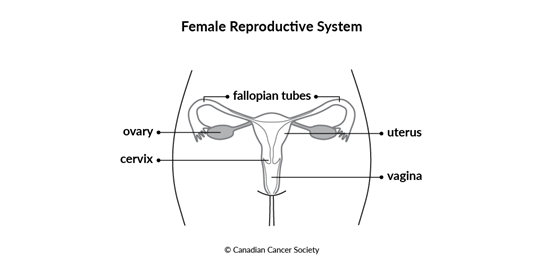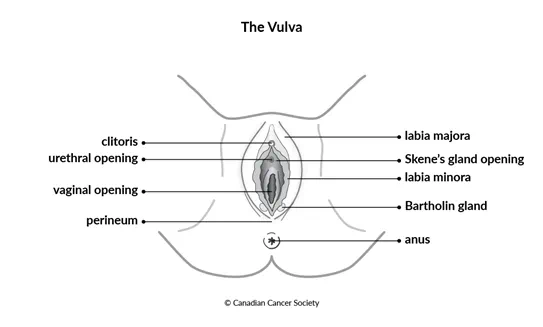What is vulvar cancer?
Vulvar cancer starts in the cells of the vulva. A cancerous (malignant) tumour is a group of cancer cells that can grow into nearby tissue and destroy it. The cancer cells can also spread (metastasize) to other parts of the body.
The vulva forms the outer part of the female reproductive system. It includes the clitoris, labia and other external, visible sex organs that surround the vaginal opening.


Cells in the vulva sometimes change and no longer grow or behave normally. These
changes may lead to non-cancerous (benign) conditions such as Bartholin gland
Changes to cells of the vulva can also cause precancerous conditions. This means that the abnormal cells are not yet cancer, but there is a chance that they will become cancer if they aren’t treated. The most common precancerous condition of the vulva is vulvar intraepithelial neoplasia (VIN).
But in some cases, changes to vulvar cells can cause vulvar cancer. Most often, vulvar cancer starts in flat, thin cells called squamous cells. These cells are the main type of skin cells. This type of cancer is called squamous cell carcinoma (SCC) of the vulva. Vulvar cancer can also start in melanocytes, which are skin cells that make pigments. Cancer that starts in melanocytes in the vulva is called vulvar melanoma.
Other types of vulvar cancer can also develop. These include Paget disease of the vulva, sarcoma and basal cell carcinoma.
The vulva
Cancerous tumours of the vulva
Precancerous conditions of the vulva
Non-cancerous tumours and conditions of the vulva
Your trusted source for accurate cancer information
With support from readers like you, we can continue to provide the highest quality cancer information for over 100 types of cancer.
We’re here to ensure easy access to accurate cancer information for you and the millions of people who visit this website every year. But we can’t do it alone.
Every donation helps fund reliable cancer information, compassionate support services and the most promising research. Please give today because every contribution counts. Thank you.
